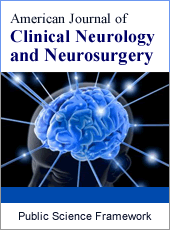American Journal of Clinical Neurology and Neurosurgery
Articles Information
American Journal of Clinical Neurology and Neurosurgery, Vol.1, No.2, Sep. 2015, Pub. Date: Jul. 29, 2015
Utilization of Community Based Health Information Systems; Management and Community Service Delivery in Kenya
Pages: 54-59 Views: 5419 Downloads: 2251
[01]
Nzanzu Jeremie, Department of Health Information systems, Faculty of Community Health and Development, Great Lakes University of Kisumu, Kisumu, Kenya.
[02]
Caroline Akinyi, Department of Health Information systems, Faculty of Community Health and Development, Great Lakes University of Kisumu, Kisumu, Kenya.
Background: Essential health services for communities continue to be a challenge in low income countries, due to challenges of infrastructure, constrained health workforce, insufficient funds and weak health systems. Large scale community health programs have utilized various strategies based on the Alma Ata primary health care declaration in 1978 where community participation, multi-sectoral engagement and involvement of community workers play and important role. While the governance and management of community level health services hinge on the formal health system, the information linkages between the community structures influence access of services by households. Kenya has implemented a community health strategy that combines community level structures and workers to reach households with services through an information structure. Methods: A qualitative study was undertaken in two counties in Kenya that were implementing the government’s Community Health Strategy since 2006. The study used a questionnaire guide for data collection from respondents consisting of Community Health Workers, Community Committee members, Community Health Extension Workers and service users. Qualitative analysis of the data consisted of thematic explorations of the information to determine overall inferences. Results: The community based health information reflected on the Ministry of Health tool, the chalkboard, forms the theme that CHWs used in the household, compromising with some individual household health needs. Conclusion: The CHWs need to be sensitized on prioritizing household health needs alongside the general theme that arise from the chalk board information. CHWs need access to the household registers periodically to help them to determine dialogue topics during household visits.
Community Health Workers, Community Information Linkages, Health Systems, Human Resources for Health, Health Systems Strengthening
[01]
WHO. 2008. Task Shifting: Rational Redistribution of Tasks among Health Workforce Teams: Global Recommendations and Guidelines. Geneva: WHO. http://www.who.int/healthsystems/TTRTaskShifting.pdf
[02]
Egger D, Travis P, Dovlo D, Hawken L. Strengthening management in low-income countries. Department of Health System Policies and Operations, Evidence and Information for Policy, WHO EIP/healthsystems/2005.1. Making health systems work: Working paper No. 1
[03]
WHO, UNICEF. 1978. Declaration of Alma-Ata. Adopted at the Int. Conf. Primary Health Care, Sept. 6–12, Alma-Ata, USSR. http://www.who.int/publications/almaata_declaration_en.pdf
[04]
WHO. 2006. The Global Shortage of Health Workers and Its Impact: WHO Fact Sheet 302. Geneva: WHO
[05]
2008-2009 Kenya Demographic Health Survey
[06]
Bhutta ZA, Lassi ZS, Pariyo G, Huicho L. 2010. Global Experience of Community Health Workers for Delivery of Health Related Millennium Development Goals: A Systematic Review, Country Case Studies, and Recommendations for Integration into National Health Systems. Geneva: World Health Organ., Global Health Workforce Alliance. http://www.who.int/workforcealliance/knowledge/publications/CHW_ FullReport_2010.pdf
[07]
Gibbons MC, Tyus NC. 2007. Systematic review of US-based randomized controlled trials using community health workers. Prog. Community Health Partnersh. 1:371–81
[08]
Counihan H, Harvey SA, Sekeseke-Chinyama M, Hamainza B, Banda R, et al. 2012. Community health workers use malaria rapid diagnostic tests (RDTs) safely and accurately: results of a longitudinal study in Zambia. Am. J. Trop. Med. Hyg. 87:57–63
[09]
Hall J. 2011. Effective community-based interventions to improve exclusive breast feeding at four to six months in low- and low-middle-income countries: a systematic review of randomised controlled trials. Midwifery 27:497–502
[10]
Ingram M, Reinschmidt KM, Schachter KA, Davidson CL, Sabo SJ, et al. 2012. Establishing a professional profile of community health workers: results from a national study of roles, activities and training. J. Community Health 37:529–37
[11]
Lassi ZS, Haider BA, Bhutta ZA. 2010. Community-based intervention packages for reducing maternal and neonatal morbidity and mortality and improving neonatal outcomes. Cochrane Database Syst. Rev. 11:CD007754
[12]
Kenya Ministry of Health Community Health Strategy, 2006
[13]
Cassels A and Janovsky K. Strengthening health management in districts and provinces. Geneva, World Health Organization, 1995.
[14]
WHO. 2006. The Global Shortage of Health Workers and Its Impact: WHO Fact Sheet 302. Geneva: WHO

ISSN Print: 2471-7231
ISSN Online: 2471-724X
Current Issue:
Vol. 6, Issue 1, March Submit a Manuscript Join Editorial Board Join Reviewer Team
ISSN Online: 2471-724X
Current Issue:
Vol. 6, Issue 1, March Submit a Manuscript Join Editorial Board Join Reviewer Team
| About This Journal |
| All Issues |
| Open Access |
| Indexing |
| Payment Information |
| Author Guidelines |
| Review Process |
| Publication Ethics |
| Editorial Board |
| Peer Reviewers |


